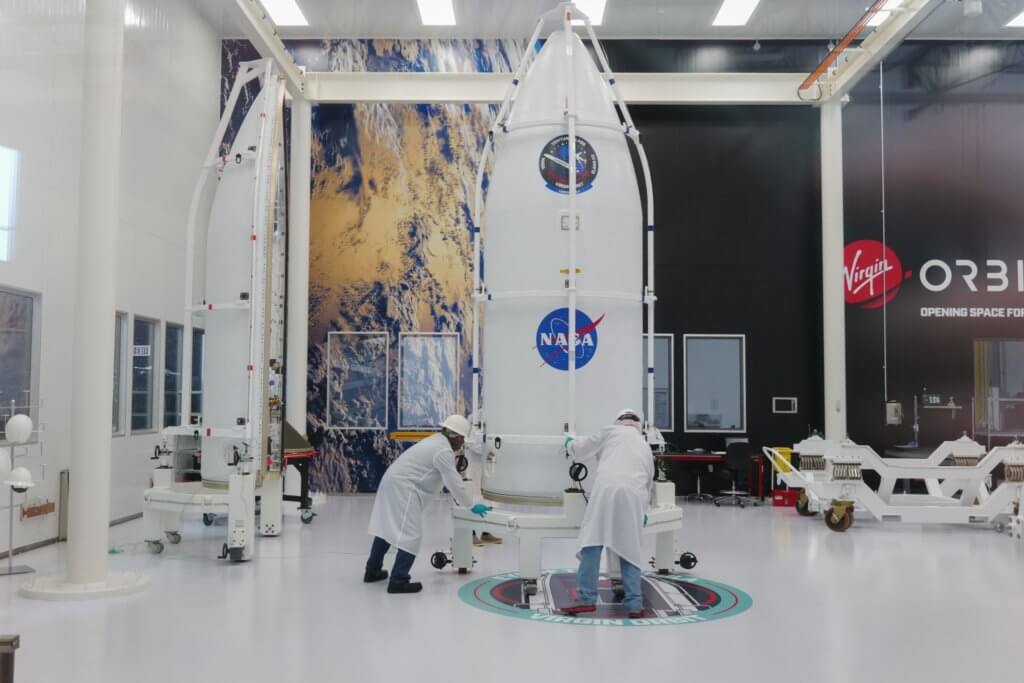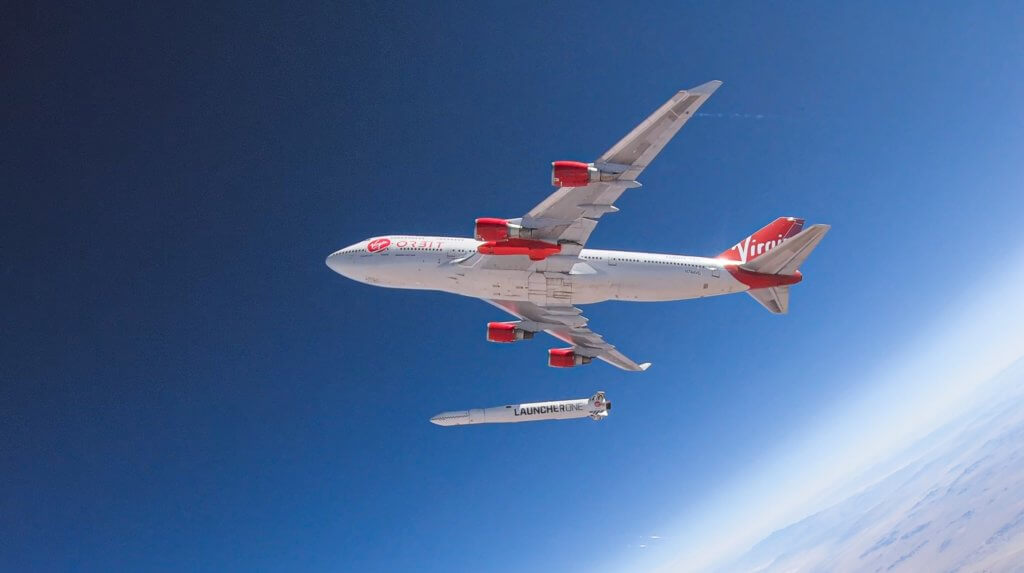When a rocket launched from the underside of a jumbo jet wing in January, Cal Poly’s groundbreaking CubeSat program surpassed another beyond-this-world milestone.
That rocket – the first to successfully launch into space from an airplane – carried a NASA payload that included ExoCube2, a miniature satellite that was built over several years by a group of about 50 multidisciplinary Cal Poly students, said advisor Pauline Faure, an assistant professor in the Aerospace Engineering Department.
“The mission is scientific in nature and aims to acquire data on ions’ mass and density in the exosphere,” said Faure of the uppermost region of Earth’s atmosphere as it gradually fades into the vacuum of space. “To execute the mission, NASA’s Goddard Space Flight Center developed a spectrometer, and the Cal Poly CubeSat Laboratory team was tasked to design, develop, manufacture, assemble and test the supporting elements of the spacecraft system — structure, power system, communication, flight software, etc.”
ExoCube2 was the 12th Cal Poly CubeSat launched to space – and the first by plane. All others were launched from launch pads on the ground. The air launch in January was historic, achieved by Virgin Orbit.

The company used a Boeing 747-400, named Cosmic Girl, which took off from the Mojave Air and Space Port on Jan. 17. A short time after takeoff, the LauncherOne rocket was released from the plane’s modified wing, then it ignited and powered itself into orbit, taking 10 CubeSats, including ExoCube2, into space.
The CubeSat, a mini-satellite the size of a bread loaf, was co-created by retired Cal Poly professor Jordi Puig-Suari. Its small size and reduced cost have revolutionized space research, making it much more accessible to schools, private companies and governments. The novel Virgin launch, meanwhile, will further expand space exploration by allowing launches from more locations on shorter notice.
Hours after the launch, the PolySat lab announced that ExoCube2 was operational. Students then turned to the campus CubeSat Lab groundstation to download scientific data from ExoCube2 and share it with their counterparts at the University of Wisconsin and the University of Illinois, who are responsible for its interpretation.
ExoCube 2’s mission is to expand knowledge of the composition and the current state of activity in the thin exosphere atmosphere, some 370 miles above sea level. The data will be useful in better predicting space weather phenomena in order to forecast potential effects of ions on satellite communications and spacecraft performance.
NASA selected and sponsored Cal Poly and others through the agency’s CubeSat Launch Initiative


